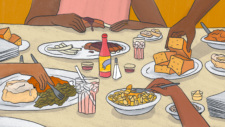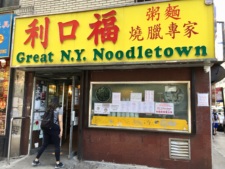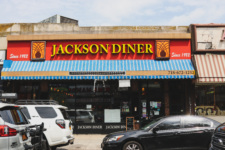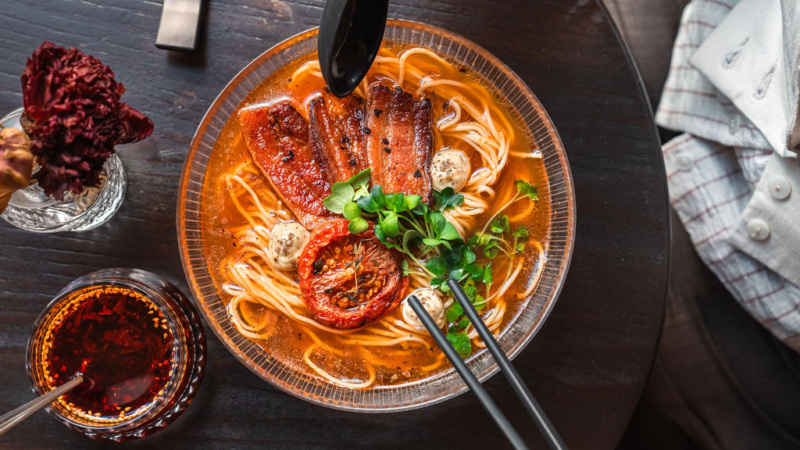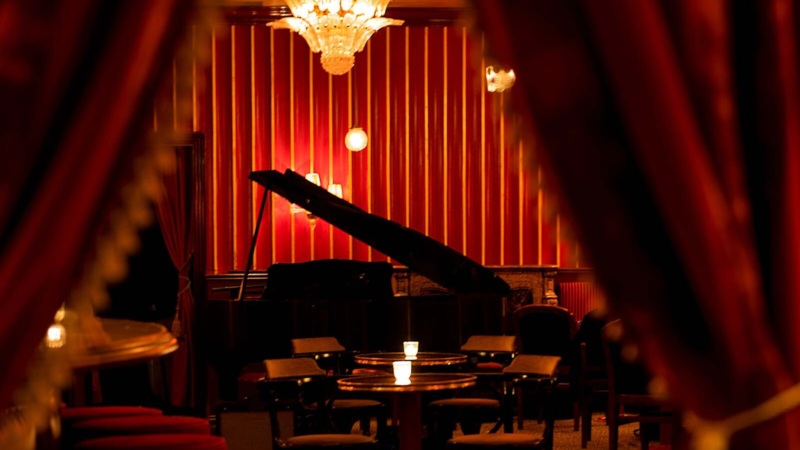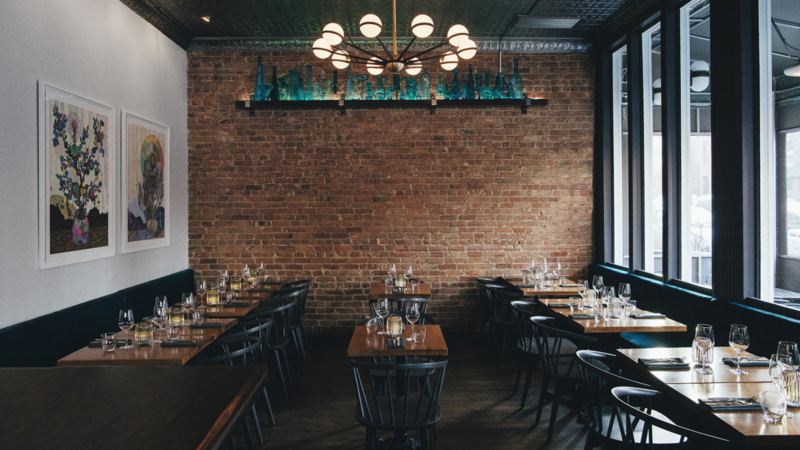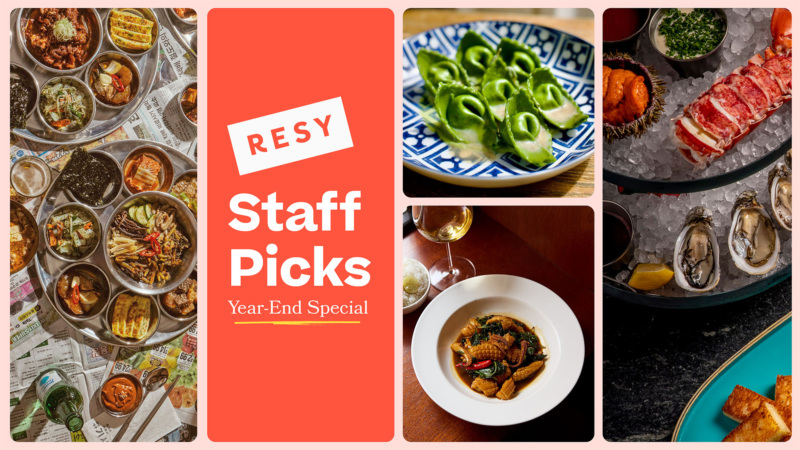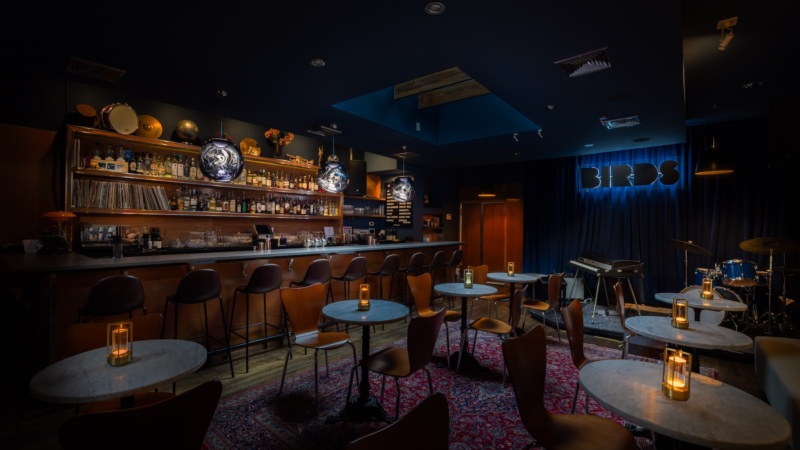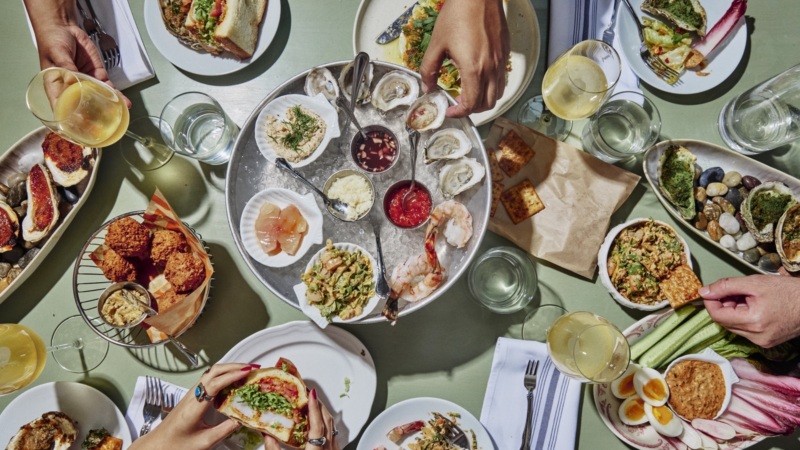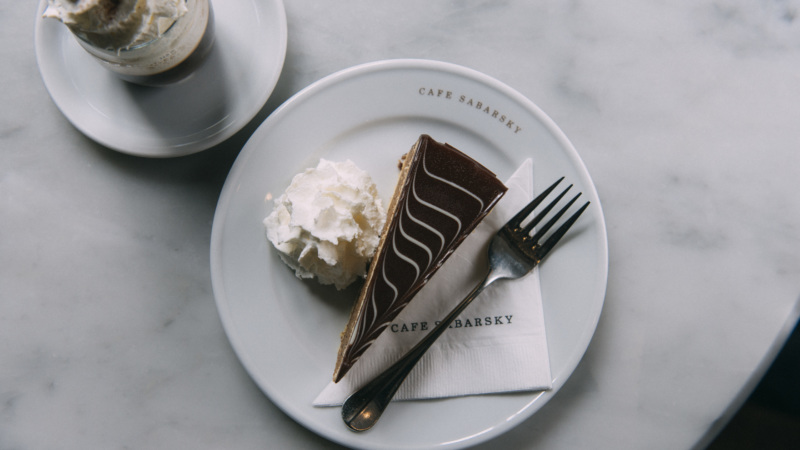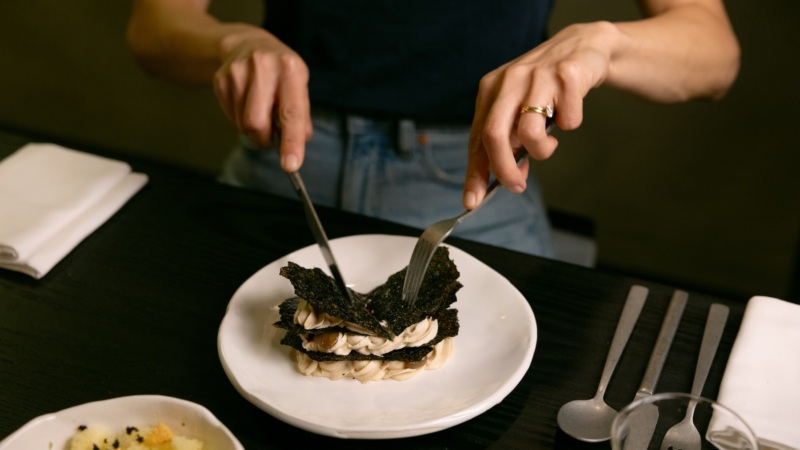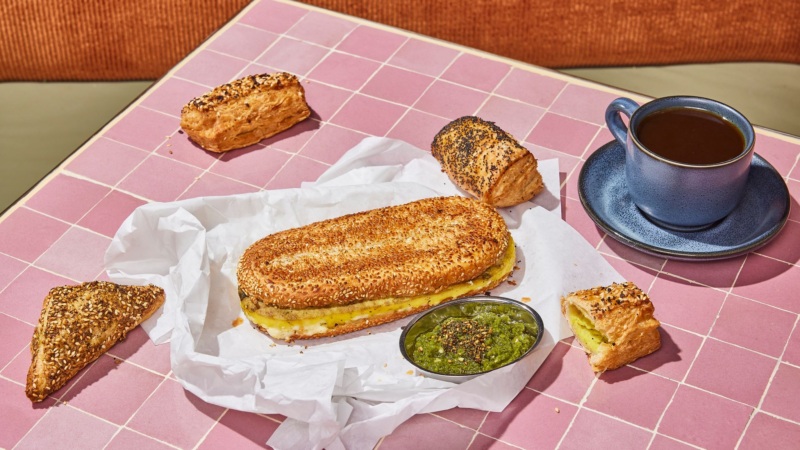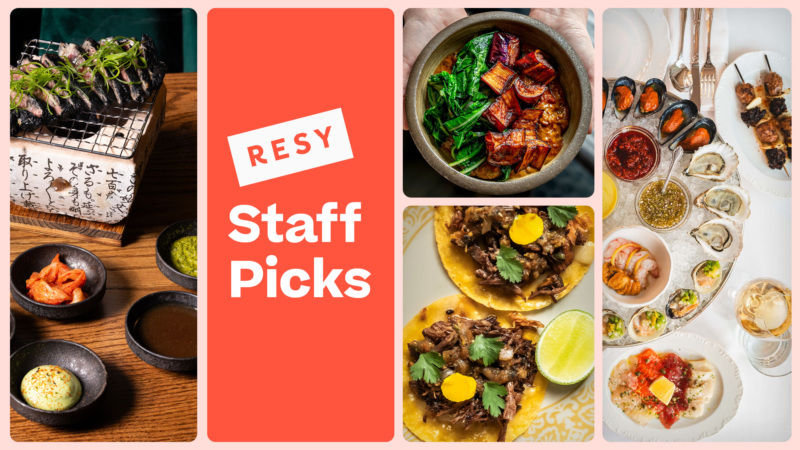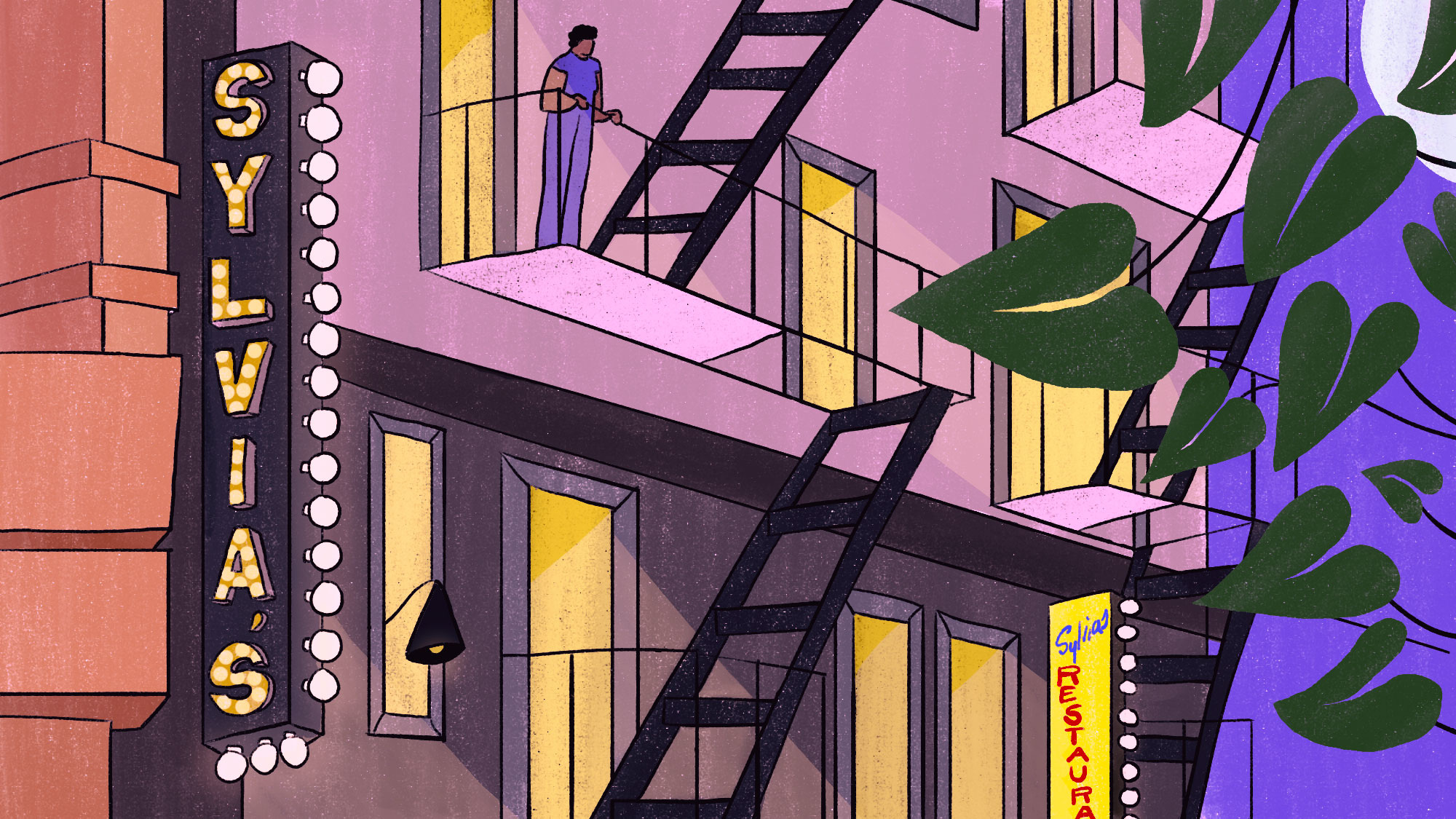
Sylvia’s in Harlem Still Stands For Community
Published:
A couple of weeks ago, on a Sunday afternoon in August, I strolled up to the pickup window at Sylvia’s Restaurant on Lenox Avenue in Harlem, where soul food “down-home” fare has been on the menu since 1962.
The patio bristled with late-brunch diners appropriately spaced apart, with servers and a commanding but gentle host all masked to safeguard from the virus that has remade our world. The sun was bright even as a slow wind teased the end of summer, and the intersection at 127th Street felt energized with street vendors, music drifting in different directions, and passersby.
Cornmeal-fried whiting with collard greens and candied yams and a plate of waffles with smothered chicken awaited me. I’d intended on nabbing the banana pudding when I placed my online order, but I was distracted by the confetti-like avalanche that has become my iPhone internet browser of over 200 open tabs. By the time I remembered the task at hand, I was too late. A cheery woman phoned just minutes after I placed my order to say the banana pudding was sold out, but did I want red velvet cake, pound cake, or sweet potato pie? “I’ll take the pie,” I said, content. At Sylvia’s you can often receive what you ask for, but the smart diner takes what she can get.
For me, Sylvia’s inhabits an ephemeral shared cultural memory. I am too young to have ever seen James Brown roll out in Harlem with the Reverend Al Sharpton by his side, but the story goes that they did so regularly, and that Sylvia’s was often on their route. The list of big, powerful names and popular faces that frequented the dining room over the years illustrates that Sylvia’s has long been a place people want to be and be seen: Diana Ross and Muhammad Ali. Bill Clinton and Barack Obama. But when Sylvia Woods renamed the Johnson luncheonette she bought after working there since 1954, paid with a mortgage backed by her mother’s farm in Hemingway, South Carolina, celebrity sightings were not in the business plan.
Woods got into restaurants at least in part because the work was significantly closer to home than the Brooklyn factory she’d been commuting to. At the time, it was not uncommon to find Southern fare scattered in Harlem, where African American migration, particularly from the Carolinas, Georgia, and Florida due to railroad routes, and Black immigration from the Caribbean and Africa, had had a foothold for decades. With the launch of Sylvia’s, Woods became even more well known in the neighborhood for extending the same gracious warmth to all diners, no matter their pedigree.
Folks didn’t just come for the biscuits and gravy, as the restaurant was more known for its breakfast in its earlier days. They came to see Woods and to stay abreast of each other. Sharpton told the New York Times Magazine that he’d dine at Sylvia’s even when he wasn’t hungry, because if you weren’t around regularly, “it was assumed that you had retired.”
I can faintly remember snippets of conversation between my grandmother, Ruth, and one of her dearest and oldest friends, also named Sylvia, as they traded news and caught up on each other’s social lives. From those bits and pieces, I can recall knowing, even as a kid growing up in California, that Uptown there was this place called Sylvia’s a couple blocks from the Apollo Theater. I knew that the food we only ever had at Thanksgiving and Christmas was available all the time — all the time! — and that the same faces I saw in the pages of Essence and Ebony magazines on our coffee table could be spotted there, sometimes together.
Years would amass before I’d learn that there was such a thing as a restaurant critic, and that a person could call themselves venturing out as if on a safari just to get dinner at the same place locals go without fanfare. It was relatively recently in my own work as a writer, that I began reading old reviews from white writers and critics who wanted to introduce their perceived white readership to what was happening in Harlem, a place that, after constant redlining and other oppressive segregationist practices had started to become a haunt of its past, albeit never perfect self.
A 1979 review in New York Magazine by Gael Greene put Sylvia’s on the map for a particular type of New Yorker and tourist who simply didn’t see Harlem before. She wrote, “I wasn’t sure a duo of aging blond preppies and I would be all that welcome ribbing and chicken-hopping in Harlem. Not that I’d tried it since Rosa Parks refused to sit down in the back of that bus in Montgomery, Ala., and the civil rights struggle began.” That’s to say, approximately, that as of 1979 a critic of New York’s restaurant scene had not been to Harlem since about 1955, the year after Woods left her factory job.
When New York discovered Sylvia’s, it had been a stalwart of Black patrons and also some European and Japanese tourists — historic fans of jazz and the like — who bothered to come around for 17 years. Greene went on to regale the daily specials and the ribs (“sassy”), but she lamented the black-eyed peas (“a bit watery”) and okra that seemed over-stewed. Her dining companion insists she “moosh” her food together. Despite such colonial rhetoric, a review in New York Magazine was still a big media day for an independently owned spot and Sylvia’s experienced a groundswell of interest that brought more white patrons to Harlem than the neighborhood had seen for some time.
I thought about this flimsy construct of restaurant value while waiting to be called back to the pickup window. When do we know a restaurant is good? Is it good because the local community supports it, knows the staff, makes that place a destination for everyday and special occasions, or because a publication makes news of it more widely available? When do we know a restaurant is worthy of maintaining versus adapting it into something new? Do chefs and owners drive change based on the folks down the block or based on the tourists — meaning, including city dwellers not directly invested in that community? When do we as diners, especially ones who are first-timers to a restaurant, take responsibility that we’re coming into a space that is whole and fulfilled and our role might be to act as a willing participant in show that was carefully plotted for our express pleasure?
For a Black-owned restaurant in Harlem to last 58 years and counting, to still be owned and operated by the Woods family, is to understand they’ve been able to weather the faulty foundation of American restaurant culture and find some semblance of sustainable truth to my queries. For that, I am glad.
I let my eyes scan upward along the black awning to the vertical sign that spells “Sylvia’s” in all caps with an array of globe lightbulbs, befitting of Woods’ status as the “queen of soul food” during her long tenure before she died in 2012 at the age of 86. The patio tables surrounding me framed a restaurant façade that has expanded from the small original luncheonette imprint. I saw mostly Black and brown people with coffee and bright-colored cocktails, plates nearly scraped clean, laughing with each other, and pausing mid-conversation to people-watch along the sidewalk. My order ready, I returned home to Brooklyn by car, not the long train commute Woods would have taken before she got in her mind she’d work in a restaurant one day.
I unpacked each dish on my kitchen island and stared at the feast in front of me, the fish a toasty yellow speckled with seasonings and a side of rémoulade, the greens sliced fat and wide with a glossy, aromatic shimmer. I dragged my index finger through the gravy-smothered chicken dish and let it linger at the crook of my mouth, surprised at the pop of jalapeño. And then finally, I unwrapped the sweet potato pie from its plastic wrap, mini-sized, just-my-size. I sliced it in half, and then again in quarters, and I stood at my island eating, the same way I stand at my aunt Patrice’s kitchen counter during the holidays when I normally have greens and sweet things. My fingers coated by the buttery crust and decadent filling, I ate that pie until it was completely gone.
Osayi Endolyn is an award-winning writer whose work often reflects on food, dining spaces, and cultural identity.
